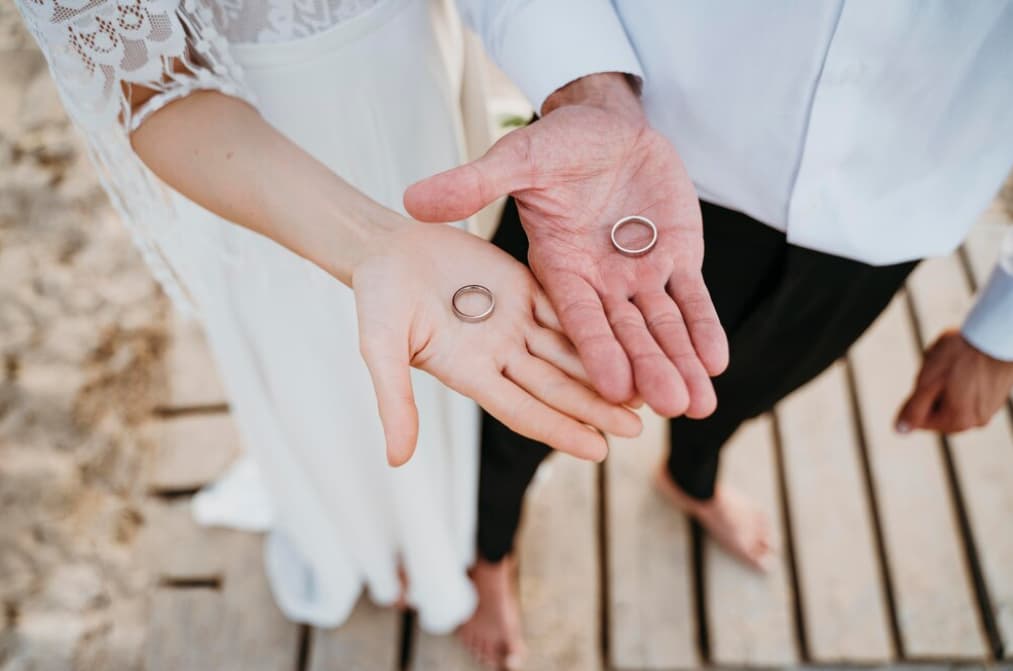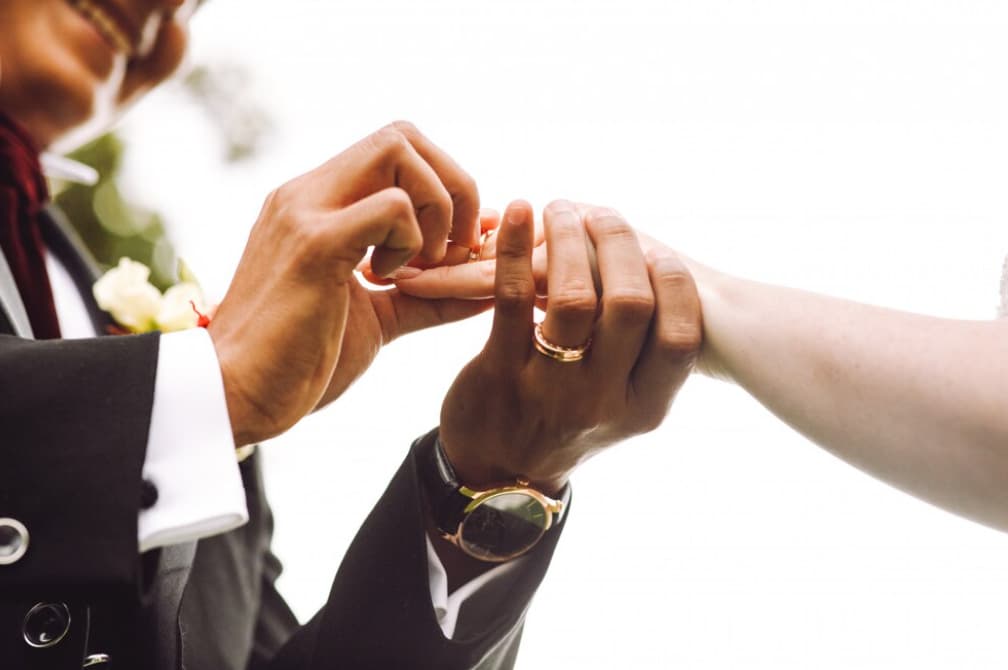Do Wedding Bands Need to Align?
The dilemma of whether to select matching wedding bands is a common one among couples. Historically, matching bands were the norm, but nowadays, many choose rings that, while having some similarities, are distinct to suit each individual’s daily needs.
Deciding on matching or distinct wedding bands is a matter of personal choice, often leading to a bit of a quandary. Don’t worry, in this detailed guide, you’ll learn about the origins of the tradition of matching wedding bands, the significance of choosing a ring that reflects your personal style, and ways to blend different ring styles harmoniously.
The Historical Context of Matching Wedding Bands

- The practice of couples wearing matching wedding bands is relatively recent, especially in the United States, where it wasn’t common for grooms to wear wedding rings until the 20th century;
- Many people believe that men’s and women’s wedding rings should be similar;
- However, this tradition differs worldwide, shaped by diverse cultural practices. Typically, wedding rings symbolize the bond shared by partners.
Despite this, the rings don’t have to be exactly alike. More and more couples are moving away from conventional standards, opting for rings that better represent their individual joy and fulfillment.
The Personal Touch: Loving Your Individual Ring
When it comes to wedding bands, personal preference plays a tremendous role. Regardless of the similarities between couples, the differences shine through when deciding on elements like wedding bands.
The wedding band is a constant reminder of your lifelong commitment, so it’s crucial that it resonates with personal taste and daily needs. For those engaged in manual work, durability might be a priority, steering them towards robust materials like tungsten or ceramics. On the other hand, fans of subtlety may find a slender band of gold or silver more appealing.

Choosing different wedding bands doesn’t mean forfeiting harmony and unity. There are numerous style strategies to make dissimilar rings look complementary. For example, selecting the same metal but exploring varying styles, or picking different metals but maintaining a consistent design can bind the bands together.
One of the latest trends in wedding bands is personalization. This could involve anything from engraving each other’s names or the wedding date on the inside of the band to more creative options like embedding the other’s birthstone.
Conclusion
The question, “Do wedding bands have to match?” is fundamentally subjective. The answer depends on the personal tastes and values of the couple. Whether your bands are matching or differ, remember that they symbolize your unique bond and commitment to each other. Embrace the tradition or bend the rules; the choice is yours.
While the debate of matching versus mismatching is subjective, both choices have their unique appeals. Matching bands signify unity and a shared journey, while different bands celebrate individuality within the bond. Ultimately, the decision should reflect a balance between personal taste and shared symbolism.